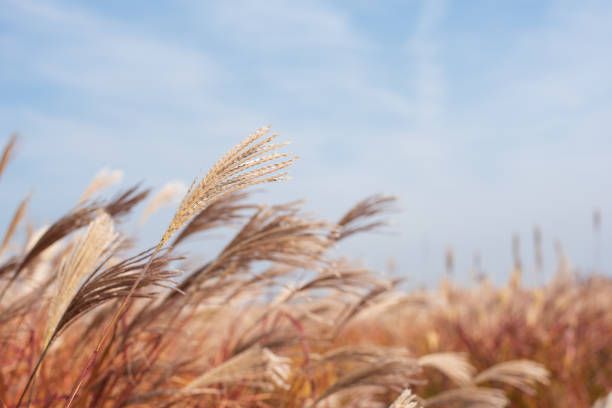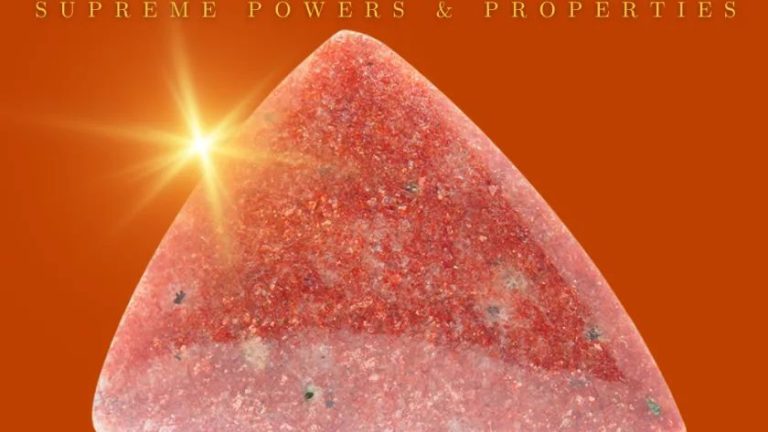What Is A Reed In The Bible?
Reeds are tall, grass-like plants that grow in wetlands and along riverbanks. They have long, straight hollow stems that were an important natural resource in biblical times. Reeds are mentioned frequently throughout the Bible and were used for a variety of purposes including writing, musical instruments, construction, baskets, arrows, and furniture.
In the ancient Near East, people relied on the strong, lightweight reeds that grew abundantly for raw materials. Reeds were an essential part of daily life and featured prominently in the culture and religious practices of Egypt, Mesopotamia, and Israel. The Bible contains many references to reeds and their uses which provide insight into the civilizations of biblical times.
Reeds as Writing Implements
In ancient Egypt, reeds were an essential material for writing. The papyrus plant, a tall, grass-like aquatic reed, was used to make papyrus sheets. The stalk of the papyrus plant was cut into long, thin strips. These strips were placed side-by-side vertically and horizontally to form a sheet, which was then pressed and dried to create papyrus paper.
Papyrus was the main writing material in ancient Egypt for over 3000 years and became the origin of the English word “paper.” Papyrus sheets were ideal for writing with reed pens and were exported throughout the Mediterranean https://www.metmuseum.org/toah/hd/papy/hd_papy.htm.
Reeds were also used as writing implements in ancient Egypt. Long reeds with the pith removed were used as pens. Scribes would hammer the end of the reed to create a nib and cut the reed at an angle. Dried black ink made of soot, gum, and water was applied to the nib, allowing scribes to write on papyrus sheets.
Reeds for Musical Instruments
Reeds were commonly used in the construction of musical instruments in biblical times. Three of the most prominent reed instruments mentioned in the Bible are the harp, pipe, and flute.
The harp (called the “kinnor” in Hebrew) was the primary stringed instrument of ancient Israel. Harps were made of a wooden frame with strings stretched across it, and many harps incorporated reeds into their design. According to the article “The Instruments of the Bible” on the Armstrong Institute website, “the resonance box on ancient harps was often made of reeds” (https://armstronginstitute.org/905-the-instruments-of-the-bible). The reed resonance box helped amplify the sound of the harp strings.
Reed pipes were a common type of wind instrument in biblical times. Also known as flutes, these instruments were constructed from hollow reeds or bamboo shoots with holes cut into them. When blown into, the pipe produced musical tones. The article “Our Top Ten Musical Instruments in the Bible” on God Who Speaks indicates reed-pipes were among the prominent wind instruments of ancient Israel (https://www.godwhospeaks.uk/our-top-ten-musical-instruments-in-the-bible/).
Lastly, reeds were used in the construction of flutes. These flutes were end-blown flutes made of bone or wood with reed mouthpieces. When blown into, the reed mouthpiece caused the air column within the flute to vibrate and produce sound.
Reeds for Construction
Reeds have been an important natural construction material since ancient times. They were used to make simple baskets, mats, fences, and even structures like hut walls. According to a 2017 review published by Zámolyi F. et al on ResearchGate, reeds are an easy to obtain and versatile natural building material used in many traditional cultures around the world.
To make baskets, reeds can be woven together into a variety of shapes and sizes. They can also be overlapped and tightly bound to create waterproof mats for flooring or shelter walls. Some ancient homes were made entirely from thick reed mats layered on top of each other for insulation. Fences too could be constructed by bundling reeds together into panels. With their lightweight and pliable nature, reeds have served as an indispensable construction material for millennia.
Reeds as Metaphors
Reeds are often used as metaphors in the Bible to represent weakness or instability. One common metaphor is the reed shaking in the wind, which is referenced in both the Old and New Testaments:
“A bruised reed He will not break And a dimly burning wick He will not extinguish” (Isaiah 42:3, source). This verse paints a picture of God gently holding a fragile, bruised reed rather than breaking it.

“As a reed swayed by the wind?” (Matthew 11:7, source). Here Jesus asks about John the Baptist – was he a reed swayed in the wind, implying weakness? The expected answer is no – John was steadfast like a prophet, not unstable like a reed.
The prophets also used reed metaphors to convey weakness. Isaiah used the shaking reed metaphor to prophesy destruction on Israel: “For the Lord will strike Israel, as a reed is shaken in the water; and He will uproot Israel from this good land” (1 Kings 14:15, source). Through this metaphor, Isaiah conveyed that Israel would be easily conquered and exiled, like a fragile reed.
The Reed Sea
The Reed Sea, also known as the Red Sea, was a body of water east of Egypt that formed part of the route of the Exodus of the Israelites from Egypt. The exact location of the crossing is debated, but most scholars believe it was located somewhere along the eastern Sinai Peninsula, either along the northern Gulf of Suez or further south along the Gulf of Aqaba.
According to the Book of Exodus, God parted the waters of the sea to allow the Israelites to walk across on dry land. As the Egyptian army pursued them, God allowed the waters to close over the Egyptian chariots and soldiers, destroying the entire army (Exodus 14:21-31). This miraculous deliverance of the Israelites from the Egyptians became a definitive event in Israelite history.
The parting of the Reed Sea is recounted in Exodus 14:15-31. As the Israelites fled Egypt, the pharaoh and his army chased after them to the Reed Sea. Trapped against the sea, the Israelites feared for their lives. God commanded Moses to raise his staff over the water, which opened up, allowing the Israelites to walk across on dry land. As the Egyptians followed, God collapsed the walls of water over them, destroying the entire army while the Israelites passed safely to the other side. This event displayed God’s power and protection over His people.
Most scholars believe the Reed Sea crossing occurred somewhere along the northeastern region of Egypt’s Sinai Peninsula, with the two most likely locations being the northern Gulf of Suez and further south along the Gulf of Aqaba. Archaeologists have found remains of ancient Egyptian chariots and campsites matching the general time period, lending support to the historicity of the Exodus account.
Jesus and Reeds
As recounted in the Gospels, Jesus was mocked by Roman soldiers who placed a crown of thorns on his head. According to the Gospel of Matthew 27:29, “They wove thorn branches into a crown and put it on his head, and they placed a reed stick in his right hand as a scepter.” [1] The crown of thorns and reed scepter were meant to mock Jesus’ claim of being the “King of the Jews.”
In addition, the Gospels reference reeds in relation to John the Baptist, who lived in the wilderness and “wore clothing made of camel’s hair, with a leather belt around his waist. His food was locusts and wild honey.” (Matthew 3:4) John the Baptist’s rough and simple living conditions in the Judean wilderness contrasted with those who lived in kings’ palaces. Jesus referenced this in Luke 7:24-25: “What did you go out into the wilderness to see? A reed swayed by the wind? If not, what did you go out to see? A man dressed in fine clothes? No, those who wear expensive clothes and indulge in luxury are in palaces.” [2] Here Jesus uses a shaking reed as a metaphor for someone swayed by wealth and power, contrasting John’s strength of character.
Reeds in Revelations
In the Book of Revelation, reeds are referenced symbolically as measuring rods. In Revelation 11:1, John is given a reed and told to measure the temple of God, the altar, and those who worship there:
“Then I was given a reed like a measuring rod. And the angel stood, saying, ‘Rise and measure the temple of God, the altar, and those who worship there.'” (Revelation 11:1, NKJV)
The act of measuring the temple signifies God’s preservation of His faithful followers during the tribulations. It is an act of protection, as measuring off the temple separates and spares it from judgment.
The reed as a measuring rod in Revelation 11 carries symbolic meaning as an instrument of God’s wisdom, justice, and divine plan. Just as measuring and numbering show God’s ownership and control, the reed measures off those who faithfully worship Him and belong to His kingdom.
Importance of Reeds
Reeds were a vital natural resource with many uses in biblical lands. They grew in abundance near bodies of water and wetlands, which were common in regions like Mesopotamia and along the Nile River. Reeds are referenced frequently in the Bible because they were integral to daily life.
Reeds had several practical functions in ancient times. Their strong, straight stems were cut and dried to make pens for writing on papyrus or parchments (Jeremiah 36:23). Reeds were also used to make baskets, mats, and other woven goods. Their hollow stems could be turned into musical pipes or flutes (1 Kings 1:40). Tall reeds were used in construction to make ceilings, walls, and fencing for homes and animal shelters.
In addition to their usefulness, reeds are mentioned metaphorically in biblical texts. They represent weakness in the well-known passage of Isaiah 36:6: “Behold, thou trustest in the staff of this bruised reed, even in Egypt, whereon if a man lean, it will go into his hand, and pierce it.” Reeds growing near rivers symbolize instability and fleetingness (Job 8:11, Isaiah 19:6). Jesus’ enemies mockingly placed a reed scepter in his hand when crucifying him (Matthew 27:29). Overall, the prevalence of reeds in the Promised Land made them a notable part of biblical settings and stories.
Conclusion
In summary, we’ve explored several important ways that reeds are referenced in the Bible. As a writing implement, reeds were used to record Scripture and compose letters in Biblical times. Reeds were also an important material for making musical instruments like flutes and harps to praise God. Structurally, reeds were woven into booths during celebrations like the Festival of Tabernacles. Metaphorically, reeds represented weakness and fragility when challenged by winds.
Some of the most significant symbolic reed references include the parting of the Reed Sea during the Exodus, the mocking and beating of Jesus with a reed scepter, and the measuring reed used by angels in Revelation. Throughout the Bible, humble reeds take on greater meaning that illuminate God’s power and plan for humanity.
In closing, reeds have played an integral yet subtle role in many impactful Biblical events. Their varied uses from writing, to music, to building pointed to God’s provision and creativity. Though fragile, God used reeds to demonstrate His authority over nature, protect His people, and ultimately sacrifice His Son Jesus for our salvation. The resilience and ubiquity of reeds remind us of God’s abundant blessings and presence throughout Scripture.



